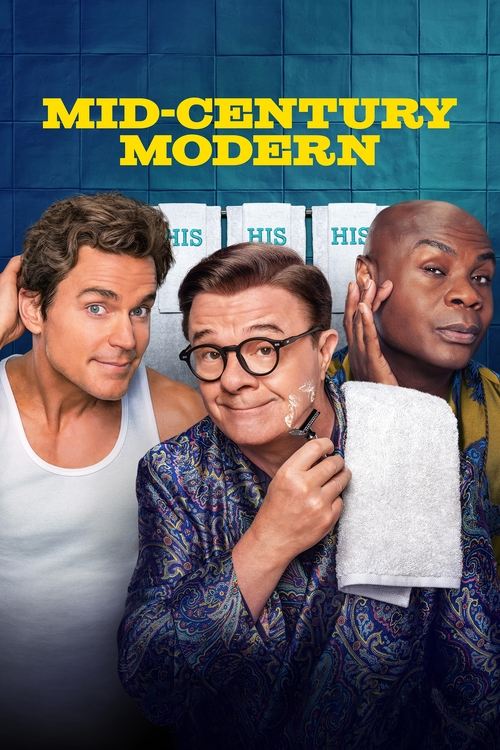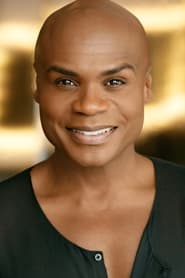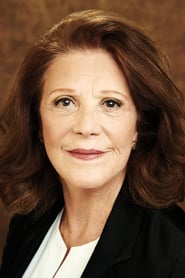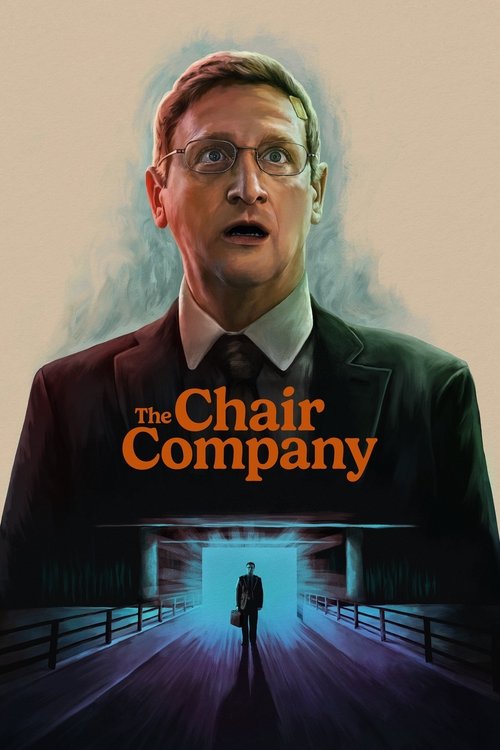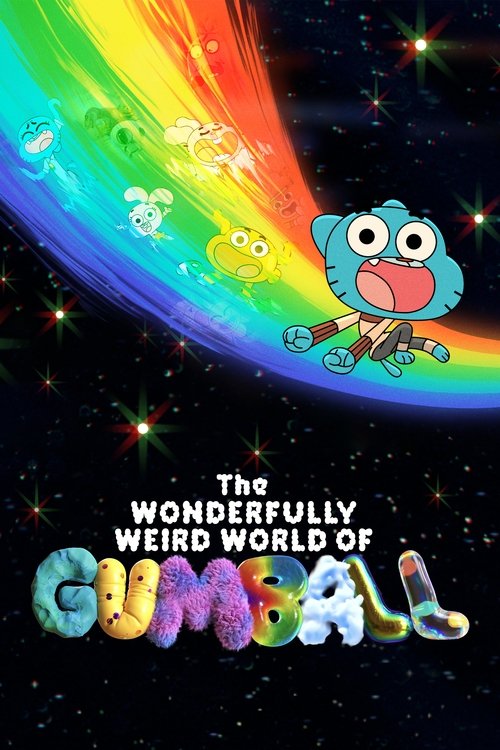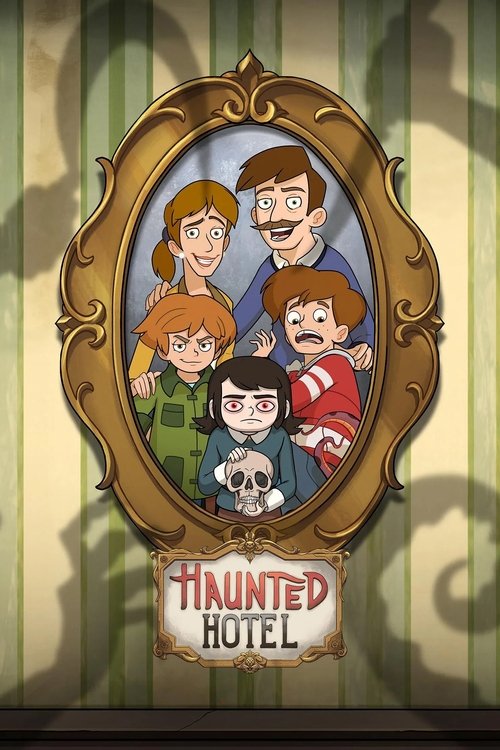
Ask Your Own Question
What is the plot?
The series begins with the funeral of George, a close friend of the three main characters: Bunny, Arthur, and Jerry. The mood is quickly set as the trio, all gay men of a certain age, exchange sharp, humorous barbs rather than dwell on sadness. Bunny, who lives in Palm Springs and runs a successful chain of women's underwear boutiques, suggests that Arthur, recently laid off from Vogue in New York, and Jerry, an ex-Mormon flight attendant with an ex-wife and daughter, move in with him in his flamboyant mid-century modern home. This decision to live together marks the start of their new chapter and sets the stage for the series.
Upon moving in, the three friends begin navigating their new living arrangement, which is filled with contrasting personalities and lifestyles. Bunny is self-loathing and flamboyant, Arthur is the snarky intellectual, and Jerry is the more grounded but complicated ex-Mormon. Their interactions are filled with witty exchanges and campy humor, highlighting their differences but also their deep bond. Bunny's home, decorated with a mix of chic and leopard print extravagance, becomes the central setting for their daily lives and comedic situations.
Bunny's mother, Sybil, a sharp-tongued and no-filter woman, joins the household, adding another dynamic to the group. Her presence brings both conflict and warmth, as she challenges the men with her acerbic wit but also provides a maternal anchor. The group forms a chosen family, supporting each other through the ups and downs of aging, friendship, and identity. Sybil's interactions often lead to comedic confrontations and heartfelt moments, enriching the group's dynamic.
Throughout the series, the friends deal with various personal and relational challenges. Arthur struggles with his recent job loss and attempts to find new purpose, while Jerry grapples with his complicated family situation involving his ex-wife and daughter. Bunny balances his business responsibilities with his personal insecurities. Their individual storylines intertwine with their collective experiences, creating a blend of humor and emotional depth.
A major turning point occurs in the penultimate episode when Sybil unexpectedly dies. Her death profoundly affects Bunny, Jerry, and Arthur, forcing them to confront grief and the fragility of life. The loss of Sybil, who had become an integral part of their chosen family, leaves a void that challenges their ability to move forward. The characters' reactions to her death are portrayed with a mix of poignancy and the show's characteristic humor, illustrating their resilience and the strength of their bond.
Following Sybil's death, the final episode focuses on the friends picking up the pieces and continuing their lives together. They reflect on their shared memories and the impact Sybil had on them, reaffirming their commitment to each other as a family. The series ends with the trio embracing their future in Palm Springs, united by friendship, love, and the legacy of those they have lost.
What is the ending?
Short, Simple Narrative of the Ending
At the end of Mid-Century Modern, after the sudden death of Sybil, Bunny's mother, the trio of Bunny Schneiderman, Jerry Frank, and Arthur Broussard navigate their grief together in the Palm Springs home they share. Despite a comedic squabble over who will get Sybil's room, they ultimately find unity and joy, sharing a dance in the now-empty room as a disco ball shines above them, symbolizing their bond and the celebration of life.
Expanded, Chronological and Narrative Description of the Ending
The final episodes of Mid-Century Modern season one unfold in the wake of Sybil Schneiderman's sudden death. The group, shaken by the loss, processes their grief in different ways, but it soon becomes clear that Sybil's absence leaves a void--not just emotionally, but in the house itself. The question of who will inherit her coveted, spacious room becomes the focus of much comedic tension.
As Bunny, the wealthiest among them and Sybil's son, tries to assert his claim, Jerry and Arthur object, each making their own case for why they should be the fortunate inheritor. Their arguments escalate into a playful yet heated back-and-forth, filled with witty one-liners and exaggerated gestures. The quarrel is interrupted by the arrival of Bunny's sister Mindy, who also throws her hat into the ring, making the situation even more chaotic.
Despite the bickering, the friends begin to realize the absurdity of their dispute, especially in the face of their shared loss. Their squabble fades into laughter, and they pause for a moment of reflection in Sybil's now-unoccupied room. The room, once bustling with her presence, feels empty and silent.
Stepping inside, Bunny, Jerry, and Arthur look around, each caught in his own thoughts. Bunny, in particular, is moved by memories of his mother, while Jerry and Arthur offer silent but meaningful support. The disco ball in the room, once a cherished part of Sybil's lively personality, catches their attention as it catches the light.
One by one, they start swaying to the music, which begins to play faintly in the background. Soon, all three are dancing together, the disco ball casting swirling lights across the walls and floor. Their dance becomes exuberant, filled with laughter and a sense of release. At that moment, their friendship is reaffirmed--despite the loss and the petty arguments, they are still together, still celebrating life as a chosen family.
The episode concludes with the trio, still dancing, enveloped in the shimmering light of the disco ball, a visual metaphor for both their enduring connection and the joy they find in each other's company, even after loss.
Throughout this sequence, viewers witness the characters' resilience, their ability to bicker and forgive, and the ways in which humor and togetherness help them process grief. The shared dance in the disco-lit room becomes a tribute to Sybil's memory and a declaration that life, and friendship, go on.
Is there a post-credit scene?
There is no post-credits scene in the 2025 TV show Mid-Century Modern. The series, which follows three gay friends navigating life in Palm Springs after an unexpected death, concludes each episode with standard closing credits and does not include any additional scenes, jokes, or teases after the credits roll. This has been confirmed by multiple sources covering the show, including episode guides and reviews, none of which mention a post-credits scene for any episode in the first and only season.
What happens to Sybil Schneiderman's character after Linda Lavin's death in the series?
Sybil Schneiderman, played by Linda Lavin, dies unexpectedly early in the series. The show addresses her death by depicting a funeral episode titled 'Here's to you Mrs Schneiderman,' where the characters mourn her loss and deal with the aftermath, including Bunny wanting to convert her room into a gym. This storyline was written to respectfully handle Lavin's real-life passing during production.
How does Bunny Schneiderman's relationship with Caroll develop in the series?
Bunny Schneiderman is surprised when Caroll reveals he is in love with him. Despite Bunny's initial surprise and the group's reactions, Caroll pulls Bunny into a kiss before leaving. This moment is significant as it adds complexity to Bunny's personal life and relationships within the story.
What is the dynamic between Jerry Frank and Mason in the show?
Jerry Frank learns that Mason, a Mormon man he almost hooked up with, has arrived in Palm Springs after leaving his bride at the altar. Mason asks to stay with Jerry, who agrees immediately, causing tension with Bunny. Later, Mindy convinces Mason to return and talk to the woman he left at the altar, resolving some of the conflict.
How do the three friends handle Sybil's belongings and her room after her death?
Four months after Sybil's death, Bunny wants to turn Sybil's room into a gym. Mindy and Arthur go through Sybil's things, reminiscing about the past. Eventually, the group offers Sybil's room to Mindy, but she declines. The room becomes a symbolic space for the characters as they navigate their grief and new living arrangements.
What role does Mindy play in the interactions among the main characters?
Mindy acts as a mediator and voice of reason among the friends. She helps Mason reconsider his decision to leave without resolving his past, informs Caroll that Bunny isn't interested in him, and sends a disco ball to Bunny and Caroll's home gym as a gesture of support. Mindy's involvement helps maintain balance and connection within the group.
Is this family friendly?
The TV show Mid-Century Modern (2025) is a comedy series centered on three gay men of a certain age living together in Palm Springs, exploring their friendships and life experiences with humor and heart. It has drawn comparisons to The Golden Girls for its ensemble dynamic and mix of laughter with touching moments.
Regarding family-friendliness, the show is aimed primarily at adult audiences and features themes and language reflecting mature relationships and real-life adult situations. The creators and cast mention that the comedy can be "a little more outrageous" than typical network sitcoms since it streams on Hulu, allowing for more freedom in language and subject matter. Additionally, it touches upon "very adult things" and sometimes addresses heavier topics with humor.
While Mid-Century Modern is not explicitly described as inappropriate for children, the content includes:
- Mature language and situations typical of adult-oriented comedies
- Some humor that "asks you to do a little tap dancing along the edge," implying occasional edginess
- Themes revolving around adult friendships, relationships, and loss, which may be complex or sensitive for younger viewers or those sensitive to mature topics
There is no indication from the sources of any graphic violence, explicit scenes, or content that would be shocking or disturbing for children, but given its adult themes and language, it is best suited for mature audiences or older teens.
In summary, Mid-Century Modern is not a traditional family show for young children. It is best considered adult-oriented, with potentially mature language and themes that might be objectionable or less suitable for children or very sensitive viewers, though it avoids overtly upsetting scenes.
Does the dog die?
Yes, in the 2025 TV series Mid-Century Modern, the dog named Reagan does die. The dog passes away from old age, and this event is shared by a character named Penny in episode 7, "Love Thy Neighbor." Reagan's death is not depicted on screen, but it plays a significant emotional role in the story, especially in how Reagan's presence affected Arthur and Bunny, and how Penny, despite her strict political stance, is portrayed with more complexity partly through her relationship with the dog.

